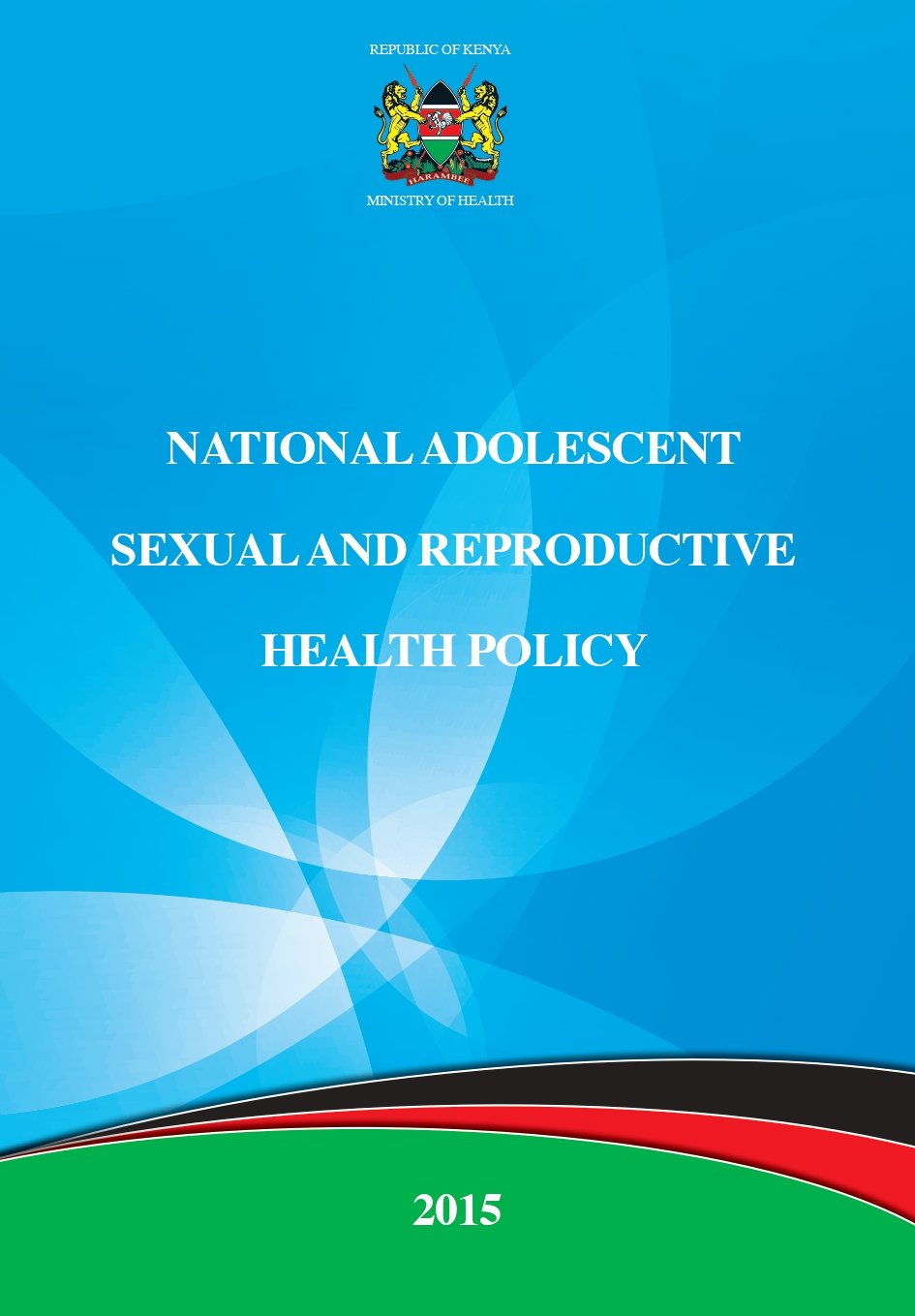According to the Kenya Population Situation Analysis (2013), the country has a rapidly growing population with the majority (24%) being below 20 years. This young population has implications for the social, economic, and political agenda of the country. A young population puts great demands on the provision of health services, education, water and sanitation, housing, and employment.
At the same time, it provides opportunities for the country’s development if the adolescents get opportunities to attain educational goals and receive an all-around preparation for responsible adulthood. This segment of the population, therefore, requires the close attention of all sectors of government, development partners, and other stakeholders for the country to attain Vision 2030, African Youth Charter (2006), and Post-2015 Development Agenda through Sustainable Development Goals (SDGs).
Kenya’s first Adolescent and Reproductive Health and Development (ARHD) Policy was developed in 2003. Since then a lot of things have changed at the national and international levels that needed to be taken into account as the Policy was reviewed. This includes the Constitution of Kenya (2010) with its attendant devolved governance structure as well as demographics, social, economic, and technological environment.
The government has made concerted efforts as part of Vision 2030 to respond to adolescents and young people by providing opportunities for economic development and skills building. The dedication of a Directorate for Youth and the setting up of funds earmarked for youth entrepreneurship is commendable
An ARHD Policy Implementation Assessment (2013) conducted by the National Council for Population and Development (NCPD) and the former Division of Reproductive Health (DRH), currently the Reproductive and Maternal Health Services Unit, with technical and financial support from USAID through the Population Reference Bureau (PRB) revealed that the ARHD Policy improved the environment for implementation of ASRH programs and services in the country.
The assessment also showed that the Policy laid the foundation for the development of related policies, strategies, and guidelines on ASRH as well as enhanced partnerships between government, private sector, non-governmental organizations (NGO), and civil society organizations (CSOs). In addition, it provided a platform for the improvement of knowledge and attitudes toward Adolescent Sexual and Reproductive Health (ASRH) among adolescents, parents, teachers, religious leaders, and community members and to some extent empowered adolescents to utilize available health services
However, the ARHD Policy faced various implementation challenges which include delayed development of the Plan of Action, inadequate dissemination of both the Policy and Plan of Action, lack of coordination among implementing partners, low stakeholder and youth involvement, limited leadership, inadequate resources, lack of political will and cultural and religious barriers to ASRH.
The foregoing necessitated review of the ARHD Policy. The National Adolescent Sexual and Reproductive Health Policy aims to enhance the SRH status of adolescents in Kenya and contribute towards the realization of their full potential in national development. The Policy intends to bring adolescent sexual and reproductive health and rights issues into the country’s mainstream health and development agenda.


